Review: Coolpad Catalyst for T-Mobile
Jun 17, 2016, 3:00 PM by Eric M. Zeman

Coolpad is back with another handset for T-Mobile. The Catalyst is a low-cost Android smartphone for novice or older users. This phone may be inexpensive, but it suffers from several critical problems that limit its appeal to a small group. Find out what ails the Catalyst in our full review.
Hardware
Is It Your Type?
The Coolpad Catalyst is one of the least expensive smartphones in T-Mobile's current lineup. If you're a T-Mobile customer and need a cheap point of entry, the $100 Catalyst is the place to start. The Catalyst is best for novice, possibly older users who will mostly use the phone functionality.
Body
The Catalyst is the fourth phone from Coolpad sold in the U.S. The little-known company has pitched its low-cost phones through the likes of MetroPCS, GoSmart, and T-Mobile. It's the last of these three that's selling the Catalyst, a phone as budget-y as a budget phone can get.
The phone's design is rather plain. It's a simple slab with a glossy black front and a matte dark gray back. I'd call the curved shape of the rear panel somewhat generic. It's entirely unimpressive. Other words I might use to describe the Catalyst could be "vanilla" and "boring." The name Catalyst is a bit misleading as far as I am concerned. It may sound kind of cool, but there's nothing about this phone that makes it an agent of change.
Coolpad used some interesting materials for this phone. The front is glass, as expected, and the glass is contained in a plastic frame. The rear shell, also plastic, wraps around to meet the frame. It's the texture of this rear shell that's so curious. The material is very coarse, almost bordering on rough. Despite the texture, the Catalyst isn't any easier to hold onto.
The Catalyst is fairly big. The 5-inch screen is surrounded by lots of bezel, which pushes the dimensions out a bit. It's the thickness that bugs me most. The phone measures 10.7mm front to back, which shouldn't feel that thick yet somehow does. I wouldn't call the phone heavy. Most people should be able to hold and use the Catalyst without issue. I didn't particularly care for the in-hand feel. It fits in pockets, but the thickness stands out. It might be uncomfortable in tight jeans.
Coolpad did a good job assembling the phone. The seams are all tight and everything fits together in a pleasing way. This doesn't stop the phone from feeling a bit cheap, but at least it's a well-built cheap phone.
One feature common to high-end phones is a display that "disappears" into the bezel, meaning you can't tell where the screen ends and the bezel begins; the front is uniform. The Catalyst's front face is the opposite of this. The display takes on a bright gray hue when off and it stands out starkly from the pitch black bezel. This is the calling card of a cheap display. Worse, there's no oleophobic coating, so fingerprints and oil form a nasty layer of slime on the glass. Three capacitive buttons are positioned below the display. I'm glad Coolpad painted them on so they're easier to find. They function fine.
Coolpad positioned the volume toggle on the left side of the phone. It stands out visually thanks to its shiny black color and it has an excellent profile, making it a cinch to find by feel. The travel and feedback could be a little bit better; I thought it was somewhat mushy. The screen lock button on the right side has a similar design. It works well. The microUSB port is on the bottom edge and the headphone jack is on the top edge.
The camera module on the back of the phone is rimmed in chrome, so it's easy to see from a distance. A small LED flash keeps it company. The rear shell is no trouble to remove. Underneath, you'll find a removable battery and the SIM/memory card slots. It's worth pointing out that the Catalyst requires a micro SIM, not a nano SIM. The nano size has become the standard on new phones this year, so I was a bit surprised to encounter the larger SIM slot. (Don't worry, T-Mobile will give you the correct SIM card.)
The Coolpad Catalyst's body is a functional low-end design. It was designed to be inexpensive, not flashy. I think you're getting what you're paying for.
Screen
Yikes, I haven't run across a screen this bad in ages. At 5 inches, the size is fine. The 854 by 480 resolution isn't doing it any favors. By today's standards, this is a really low-rez screen and it's anything but sharp. The real problem is the viewing angle. I say "angle" and not "angles" because there is only one way to look at this screen: head on. Tipping the phone even a little bit in any direction results in both a dramatic color shift and an incredible loss in brightness. I've seen plenty of displays go from white to blue when tilted side to side, but the Catalyst's is the first I've seen for from white to blue to red. The only time whites look white is when you square up and look directly at the screen. Beyond the color issues, brightness is just not good enough. It's fine for indoor use, but absolutely useless outdoors. I've seen less expensive phones with better screens than this.
Signal
The Catalyst connected to T-Mobile's network in the NYC area without issue. I was able to make calls everywhere I took the phone, even in areas with poor coverage. Calls remained connected at highway speeds, and the phone didn't miss any calls while I reviewed it.
Data speeds left me wanting more. Though the device always surfed via LTE, web pages felt sluggish. Apps such as Facebook and Instagram faired relatively poorly on the Catalyst compared to other T-Mobile devices I've tested in recent months. It suffices, but don't expect the phone to stream YouTube or Spotify over LTE reliably.
Sound
Somewhat shockingly, the Coolpad Catalyst delivers outstanding call quality. In fact, the Catalyst produces better-sounding calls than most every device I've reviewed this year. The earpiece produces insane volume levels with absolutely no distortion. You can set the phone all the way up and hear calls pretty much everywhere but a loud, thumping nightclub. The clarity of calls surprised me. Voices in the earpiece have an immediacy and presence that's rare in cell phones. Those I spoke to through the Catalyst said I sounded very good.
The speakerphone isn't quite as impressive, but it still performs very well. Since the speakerphone is positioned on the back of the phone, you'll get the best results by placing the Catalyst on a flat, hard surface, such as a table or desk. The volume is more than adequate to allow for calls in the car, but it is prone to a little bit of distortion.
The ringers and alerts are very, very loud. The vibrate alert is quite strong.
Battery
The Catalyst has a 2,200 mAh battery and it suffices. I was able to get the phone from breakfast to bedtime on most days. On one day of heavy testing the battery gave out in the early evening, but I was really abusing the phone. The low-resolution screen is probably the saving grace here. Most people should see a full day of battery life from the Catalyst.
The phone comes with the basic system-level battery saver. When switched on, it reduces screen brightness and turns off WiFi, Bluetooth, and GPS. If you run into trouble, the battery saver can scare a few more hours of life for basics like calls, messaging, and email.
The Catalyst does not include rapid nor wireless charging.
Bluetooth, GPS, NFC, WiFi
Phone calls channeled through the Catalyst's Bluetooth radio to a headset sounded excellent. I was very pleased with calls sent to my car's hands-free system, too. Music pushed to a Bluetooth speaker sounded mediocre. Pairing with these and other devices was not difficult.
The GPS radio and Google Maps worked well enough. The phone pinpointed my location in under 5 seconds and was accurate to within about 25 feet or so. The Catalyst was a little slow when it came to point-to-point navigation.
The Catalyst does not have NFC. The WiFi radio worked very well.
Software
Lock Screen
The Catalyst has a bare-bones lock screen experience.
Press the screen lock button to wake the display. You'll be greeted by the time/date with notifications listed beneath. You can select how revealing the notifications are. For example, I set the Catalyst to show me that I have new text messages, but not to display who the message is from nor its contents.
There are no fancy tapping or other gestures to wake the screen. Only the lock button turns it on/off. You can choose a PIN, pattern, or password to lock the phone, or leave it exposed. There are no advanced locking mechanisms, such as a fingerprint reader.
As always, you can jump to the phone or camera via lock screen shortcuts at the bottom. I appreciate that you can access and use the Quick Settings panel from the lock screen.
Home Screens
I'm always happy to see stock Android when booting up a phone for the first time, but Coolpad gave the Catalyst Android 5.1 Lollipop. This is pretty much unforgivable. Android 6 has been available to OEMs since October of last year, and Google is just about ready to release Android 7. There's no good reason for the Catalyst to ship with such an old version of Android. (For starters, older versions of Android aren't as secure as newer versions. They also don't have the latest features, such as battery optimization and more personalized search.)
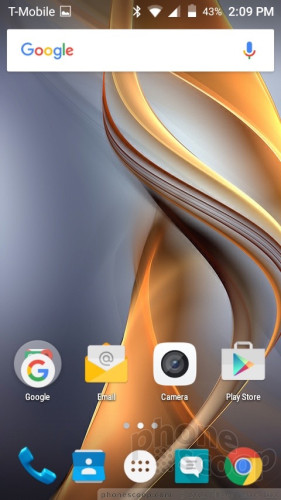
Anyone familiar with Android knows the Catalyst can be customized at will with app shortcuts, widgets, and so on. The app drawer is arranged alphabetically. You can't customize the app drawer, but you can slap folders onto the home screens if you wish. The Quick Settings panel and system settings all behave as expected for a Lollipop phone. Coolpad didn't dress any of it up, and I'm happy to report it all functions just fine.
The Catalyst performs smoothly enough that I didn't notice any real hiccups. The phone has a 1.1 GHz quad-core Snapdragon 210 processor with 1 GB of RAM. Most apps open quickly, though the camera was a little slow. Screen transitions were mostly seamless. Like other entry-level phones, the Catalyst is very slow when it comes to downloading and/or updating apps from the Google Play Store.
Camera
The Catalyst has a decidedly simple camera application. There's no physical camera button, but there's a shortcut on the lock screen if you're in a hurry.
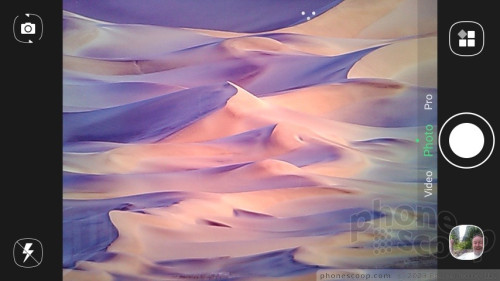
The UI is balanced with a button in each of the four corners: selfie cam, flash, modes, gallery. The frame for shooting is a 4:3 window in the middle with black strips on either side. The right side includes a shutter button. The Catalyst has three main shooting modes: auto, pro, and video.
In auto mode, simply press the shutter button to capture images. You can press-to-focus if you wish, but you still need to hit the shutter button. There are four alternate shooting modes available when in the auto: HDR, beauty, smile, and nightshot. These work as they do on other phones. The beauty mode, for example, has a sliding beautification bar that will eliminate moles and other flaws if you want. The results can be a bit grotesque if you go too far.
Pro mode offers an entirely different set of tools. It drops the HDR, et al., options in favor of sliding controls for adjusting white balance, brightness, focus, and ISO. You can't control exposure length, which is a shame.
The video mode is dead simple and doesn't offer anything fancy like hyperlapse or slo-mo.
The camera does have a standard collection of settings to adjust, but they are more or less invisible. If you look carefully, you'll see small white dots at the top of the screen when using the camera. Honestly, the first few days I used the phone I thought it was a screen error or some other camera-app problem. It turns out, if you press the dots, a settings menu appears. It's not intuitive at all.
I found the app worked well enough most of the time. It was sometimes slow when adjusting from mode to mode, but the Catalyst was quick when it came time to focus and take pictures.
Photos
As decent as the camera app is, the Catalyst can't capture a good image to save its life. It had real trouble with exposure and focus. Look at the flowers sample photo: they're totally overblown. You can see how incredibly soft and downright out-of-focus some of the examples are below, like the tree. These images just aren't good enough. The shot with the Lego cars is grainy and soft. Only one image in the group below, the balloon, looks decent enough to share with others. In the selfie shot, you can see how the sky and my t-shirt are way overexposed.
The Catalyst does not take good pictures.
It doesn't take good video, either. It captures a max resolution of 720p and the results are grainy at best. Focus and exposure are more consistent than in pictures, but the grain just kills it for me.
CoolPad / T-Mobile Stuff
There's nothing to talk about here, really. Bloatware is at a minimum. T-Mobile's account and hotspot apps are aboard but that's about it. Even so, the phone has just 8 GB of storage and only 5 GB of that is available to users.
Wrap-Up
The Coolpad Catalyst is a disappointment. This phone may cost only $100, but it's not worth that much.
The hardware is uninspired and looks cheap. The rough rear panel is questionable. The screen is simply awful. Data performance was sluggish. The camera is practically useless. Did I mention that the screen sucks?
On the upside, battery life is decent. Moreover, phone call quality is one of the Catalyst's only redeeming features: voice calls are superb. It's nice to see stock Android, but Lollipop doesn't taste good any more.
I'd only recommend the Catalyst to those who need a good voice phone with some smartphone features, like email, navigation, and so on. Even then, you'd probably be much better off spending $40 more on the LG K7 from T-Mobile. Better yet, move over to MetroPCS (owned/operated by T-Mobile) which has a good selection of solid phones for under $100, such as the LG K10 or Samsung Galaxy Grand Prime.
Comments
Coolpad 3622a metropcs
I'm just coming off of a ln Lg k7, which I'd actually recommend if you're looking for an inexpensive device but it's very fragile.
Back to the Coolpad. Really can not complain for the price. Lacks a lot of the fancy features I'm used to in modern smartphone but the screen is large, if of low quality. Actually seems to lean toward the green end of the spectrum (most noticeable when yellows are displayed)
The touch screen feels a bit laggy, I type very fast and it can't seem to keep up so typing is somewhat of a chore.
Basically, you get what you pay for. An inexpensive phone that is usable but I'd...
(continues)
Coolpad T-Mobile/Metro PCS
(continues)


















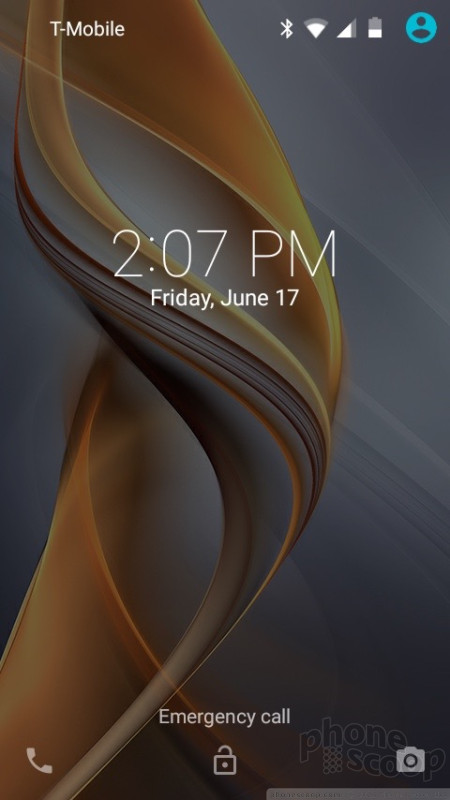





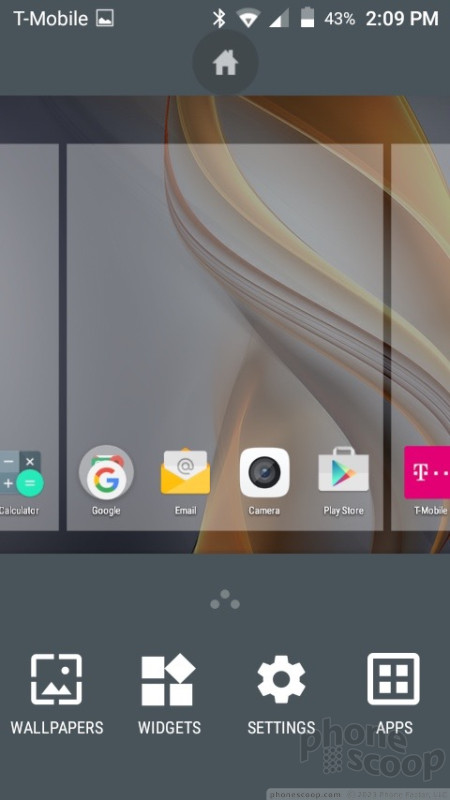






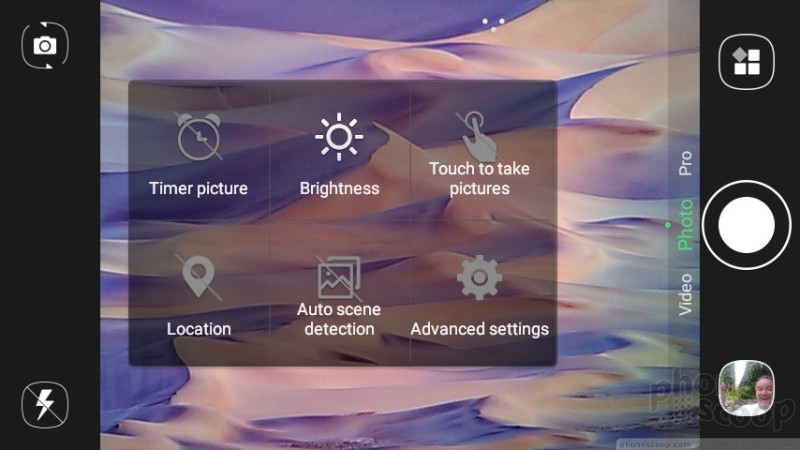


















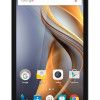 T-Mobile Picks Up Coolpad Catalyst for $100
T-Mobile Picks Up Coolpad Catalyst for $100
 iPhone 14 Plus Offers a Big Screen For Less
iPhone 14 Plus Offers a Big Screen For Less
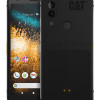 T-Mobile Picks Up Rugged CAT S62
T-Mobile Picks Up Rugged CAT S62
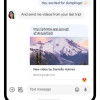 Major Update to Google Messages Brings iPhone-Compatible Emoji Reactions
Major Update to Google Messages Brings iPhone-Compatible Emoji Reactions
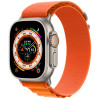 Apple Watch Goes Ultra
Apple Watch Goes Ultra
 Coolpad Catalyst
Coolpad Catalyst




